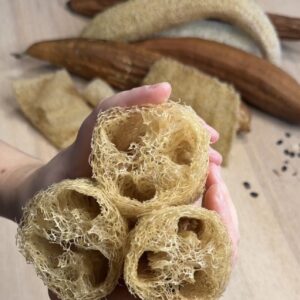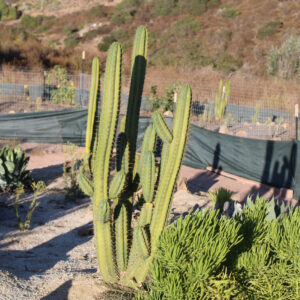Description
body { font-family: “Market Sans”, Arial, sans-serif; }
Buy 2 or more packets of mix and match seeds and get a free packet of seeds.
Swiss chard is not only a superstar in Mediterranean cooking, but is also one of the most nutritious vegetables around today. It has distinctly large, dark green leaves, which are harvested at various stages of maturity. The whole plant with tender, young leaves can be used for salads, while the individual large-sized, mature leaves can be harvested for sautéing and cooking dishes.
The vegetable is known by many names, including silverbeet, spinach beet, perpetual spinach, bright lights, crab beet, and seakale beets. In South Africa, however, it is simply called spinach. It has been around for centuries, but has been confused with beets and other vegetables like cardoon because of their physical similarities.
Swiss chard comes in various types depending on shine, crunchy stalks, and petiole. There’s the green stalk (Lucullus), Red stalk (Charlotte, Rhubarb chard), and multicolor stalks (bright lights).
This annual crop, widely grown around the Mediterranean region and available at its best from June to November, is so flexible in the kitchen. Fresh, young ones are used raw in salads, while mature ones are sautéed or cooked. One example is pizzoccheri, a kind of flat ribbon pasta enjoyed in Italian cooking. In Egyptian cuisine, it is commonly cooked with taro root and coriander in a light broth. The leaves’ bitterness fades with cooking, giving you a refined flavor.
Health Benefits of Swiss Chard
While it has not been as extensively studied as other vegetables like beets and spinach, Swiss chard has earned its right to be routinely included in healthy diets around the world. It has an impressive phytonutrient profile, as easily recognized in its vibrant colors, from dark greens to red, purple, and a rainbow of colors in its stalks and veins. Phytonutrients are a source of antioxidant, anti-inflammatory, and whole body benefits.
Swiss chard is very low in calories, or only about 19 calories per 100 grams of fresh, raw leaves. It is also an excellent source of vitamin C, its fresh leaves providing about 33 percent of recommended levels per 100 grams. Vitamin C helps quench free radicals and reactive oxygen species (ROS), and studies link the regular consumption of C-rich foods to the maintenance of normal connective tissue, prevention of iron deficiency, boosting immunity.
Swiss chard is also a recommended source of vitamin K, omega-3 fats, vitamin A, and flavonoid antioxidants such as beta carotene, alpha carotene, lutein, and zeaxanthin. It can also be counted on to provide B-vitamins such as folate, niacin, vitamin B6 (pyridoxine), thiamin, and pantothenic acid, which are all essential for cellular metabolism to function optimally.
In terms of mineral content, this vegetable has copper, calcium, sodium, potassium, iron, manganese, and phosphorus. Potassium is considered the “good salt” and has made headlines for its role in helping lower blood pressure, while iron is required for cellular oxidation and the formation of red blood cells.
Studies on Swiss Chard
The leaves of Swiss chard are shown in recent research to contain at least 13 different polyphenol antioxidants, including kaempferol, the flavonoid with cardioprotective properties and also found in broccoli, kale, and strawberries. Aside from kaempferol, one of the primary flavonoids found in its leaves is syringic acid, which is given attention for its ability to help regulate blood sugar.
Like beets, Swiss chard provides phytonutrients called betalains, which offer reddish-purple betacyanin pigments and yellowish betaxanthin pigments. Many of the betalain pigments in the vegetable have been shown to provide antioxidant, anti-inflammatory, and detoxifying effects. the detoxification support provided by betalains includes support of certain important Phase 2 detoxification steps that involve glutathione.
It only makes sure to prioritize the consumption of Swiss chard if you are looking to have the unique benefits of phytonutrients as well as special benefits such as managing and controlling your blood sugar.
GROWING INFORMATION
CULTURE:Soil pH should be over 6.0. Cool and mild weather is preferred, though chard has some heat tolerance. Seeds germinate in soil temperatures from 40-100°F (5-38°C) with an optimum of 86°F (30°C). Seedlings will tolerate light frosts, and mature plants are hardy to moderate frosts. It may overwinter in mild areas.
TRANSPLANTING:Sow seed in a cold frame or indoors in early spring, about 5–6 weeks before transplanting out after heavy frosts become infrequent. Sow seeds ½” deep, 2 seeds every 2″, thin to 4″ apart. Transplant out 4″ apart in rows 12–18″ apart.
DIRECT SEEDING:Sow beginning midspring and on into midsummer (fall where winter is mild).
Will be shipped from a florist and greenhouse called Flower Shop Inc. Situated in Manhasset, New York. In Business for 20 years and counting.





Reviews
There are no reviews yet.